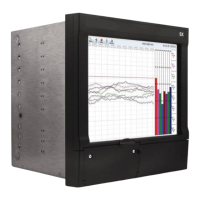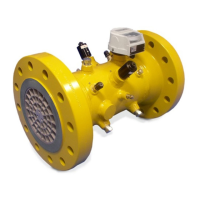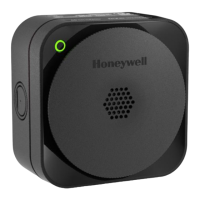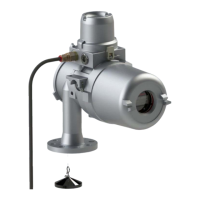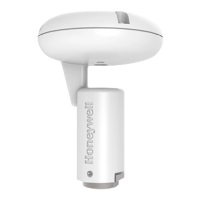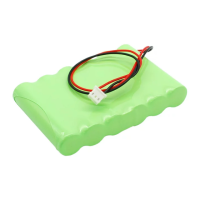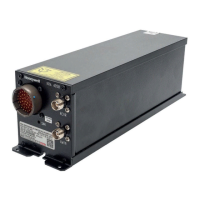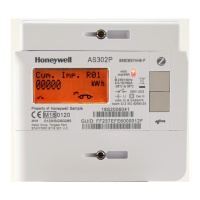Honeywell Sensing and Control 31
SC 2000, SC2001, SC3004
Rev. G, 008-0608-00
10.5.4 CALIBRATION TYPE Menu Item
This chooses the type of calibration technique to be used. There
are three methods that can be used to calibrate the transducer to
the Input Channel. Each has advantages and disadvantages as
described in the table below
Table 10-: Comparison of Calibration Types
Shunt Calibration
mV/V Calibration
2-, 3-, or 5-point
Known Load Cali-
bration
RECOMMENDED...
...for most applications no yes no
...when frequently
swapping transducers
yes yes no
...when best possible
accuracy required
no no yes
PROs and CONs
Relative accuracy good better best
Requires actual,
calibrated loads to be
applied
no no yes
Automatically cali-
brates with Signature
Calibration transduc-
ers
yes yes no
Max. distance of trans-
ducer from instrument
w/out sense wires
15 ft [5 m] 50 ft
[15 m]
300 ft
[100 m]
Max. distance of trans-
ducer from instrument
with sense wires
15 ft [5 m] 100 ft
[30 m]
300 ft
[100 m]
CALIBRATION TECHNIQUE
Zero-scale point from... applied
load
applied
load
applied
load
Full-scale point from... transducer
output
when shunt
resistor
applied
internal
reference
applied
load
Linearity correction
from...
data
stored in
Signature
Module (if
available)
data
stored in
Signature
Module (if
available)
2-point:
none;
3- or
5-point:
applied
load
It is important to know your application in order to select the
appropriate calibration type. mV/V (“millivolt-per-volt”) Calibra-
tion is recommended for most applications because it doesn’t
require known loads and it allows easy swapping of transducers
equipped with Signature Calibration. When the best possible ac-
curacy is required, Known-Load Calibration is recommended.
The choices for this menu item are:
• “TYPE= SHUNT CAL” means Shunt Calibration. First, you are
prompted to apply the load entered in the “ZERO SCALE VAL-
UE” register. Next, the instrument inserts a known, precision
resistor into the transducer circuit, which causes a predict-
able apparent signal. The instrument then takes a reading
and adjusts itself using the “SHUNT CAL VALUE” register.
• “TYPE= MV/V CAL” means Millivolt-per-Volt Calibration. First,
you are prompted to apply the load entered in the “ZERO
SCALE VALUE” register. Next, the instrument takes a reading
from an accurate, internal mV/V reference. The instrument
then uses the “FULL SCALE MV/V” and “FULL SCALE VALUE” val-
ues in mathematical calculations to scale its tracking values.
• “TYPE= 2 POINT CAL” means 2-Point Known Load Calibra-
tion. You are prompted to apply the loads to the transducer
that were entered in the “KNOWN POINT 1/2” and “KNOWN POINT
2/2” registers. This technique assumes that the transducer is
linear, so the usual loads used are zero scale and full scale.
• “TYPE= 3 POINT CAL” means 3-Point Known Load Calibration.
You are prompted to apply the loads to the transducer that
were entered in the “KNOWN POINT 1/3” and “KNOWN POINT 2/3”
and “KNOWN POINT 3/3” registers. This technique can be used
to compensate for the non-linearity in the transducer. The
usual loads used are zero scale, half scale and full scale, but
you are not restricted to these loads.
• “TYPE= 5 POINT CAL” means 5-Point Known Load Calibration.
You are prompted to apply the loads to the transducer that
were entered in the “KNOWN POINT 1/5”, “KNOWN POINT 2/5”,
“KNOWN POINT 3/5”, “KNOWN POINT 4/5” and “KNOWN POINT
5/5” registers. This technique can be used to compensate
for the non-linearity in the transducer. The usual loads used
are zero scale, one-quarter scale, half scale, three-quarters
scale and full scale, but you are not restricted to these loads.
The selection of the calibration type affects what menu items ap-
pear in the CALIBRATION DATA sub-menu.
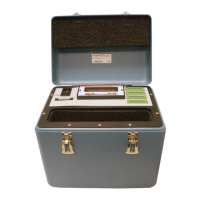
